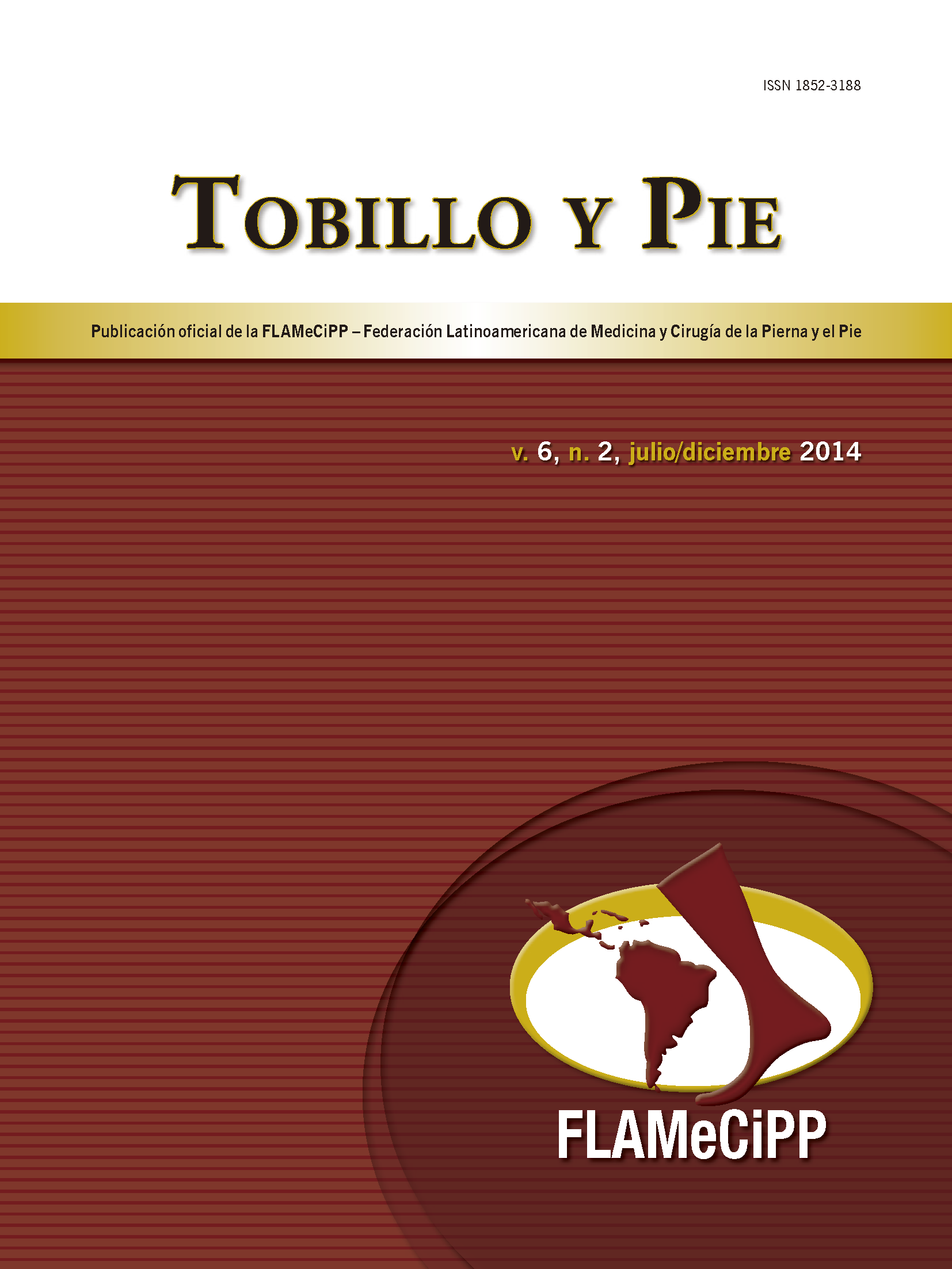Clinical evolution of patients with rheumatoid forefoot deformities treated with minimal invasive surgery
Keywords:
Surgical procedures, opertive/ methods, ; Arthritis, rheumatoid/ surgery, ; Toes/surgery; Foot deformities, acquired/surgery, Surgical proceduresminimally invasiveAbstract
Objective: To determine which is the function and pain level, presence of hyperkeratosis at 3, 6 and 12 months after minimal incision surgery of patients that underwent surgery between January 2008 and July 2013 in our hospital. Methods: We conducted a longitudinal ambispective, observational and descriptive study of the clinical outcome of the patients with diagnostic of rheumatic forefoot deformities before and after surgery in the period between January 2008 and July 2013. Results: We included 41 foot of 21 patients, 20 female and 1 male patient, with a follow up of at least 12 months after surgery. When we compared pain referred before and after surgery we found a significant reduction of pain (t=22.88, p<0.00001). The measures of functionality also improved with a statistical difference (t=13.47, p<0.00001). Conclusions: The bone preserving, minimal incision technic has proven to be a reliable treatment option for patients with rheumatic forefoot deformities


